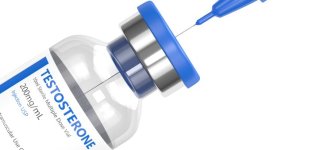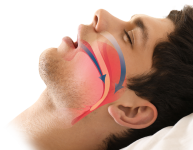Testosterone Replacement Therapy (TRT) is a crucial option for many men experiencing low testosterone levels, often referred to as hypogonadism. Understanding how to choose the right TRT can significantly impact overall health, well-being, and quality of life.
In this comprehensive guide, we will cover essential aspects of TRT, including its benefits, types, potential side effects, and key considerations when selecting the right therapy.

Testosterone injections are one of the most common forms of TRT. They can be administered in various frequencies, such as every two weeks or once a month. The primary types include:
Disadvantages: Some patients may experience discomfort at the injection site and fluctuations in energy levels between doses.
Advantages: Patches provide a steady release of testosterone and are easy to use.
Disadvantages: Skin irritation may occur at the application site, and some users may find them less convenient.
Advantages: Gels are user-friendly and provide stable hormone levels.
Disadvantages: There is a risk of transferring testosterone to others through skin contact, requiring caution during application.
Advantages: Once implanted, pellets require minimal maintenance and provide consistent hormone levels.
Disadvantages: The procedure requires a minor surgical intervention, and there may be a risk of infection.
Advantages: Oral forms are convenient and easy to take.
Disadvantages: They may not be as effective as other methods and can have more side effects.

While TRT can offer significant benefits, it’s important to be aware of potential side effects:
Side effects of TRT:
Testosterone Replacement Therapy (TRT) can be beneficial for many individuals with low testosterone levels; however, it is essential to be aware of the potential side effects associated with this treatment. Here are some common side effects of TRT:
If you experience any severe or concerning side effects, it is crucial to contact your healthcare provider immediately for guidance and potential adjustments to your therapy.
Additionally, they can help create an individualized treatment plan tailored to your specific needs, ensuring safe and effective hormone replacement.
Taking charge of your health is essential, and with the right approach to TRT, you can reclaim vitality and improve your overall quality of life. Always prioritize regular check-ups and open discussions with your healthcare team to ensure optimal results from your chosen therapy.
In this comprehensive guide, we will cover essential aspects of TRT, including its benefits, types, potential side effects, and key considerations when selecting the right therapy.
Types of Testosterone Replacement Therapy
Choosing the right type of TRT is crucial for achieving desired outcomes. There are several forms of testosterone that can be administered:1. Injections

Testosterone injections are one of the most common forms of TRT. They can be administered in various frequencies, such as every two weeks or once a month. The primary types include:
- Testosterone Cypionate
- Testosterone Enanthate
Disadvantages: Some patients may experience discomfort at the injection site and fluctuations in energy levels between doses.
2. Transdermal Patches
These patches adhere to the skin and release testosterone into the bloodstream throughout the day.Advantages: Patches provide a steady release of testosterone and are easy to use.
Disadvantages: Skin irritation may occur at the application site, and some users may find them less convenient.
3. Gel Forms
Testosterone gels are applied daily to the skin. They allow for consistent absorption of testosterone.Advantages: Gels are user-friendly and provide stable hormone levels.
Disadvantages: There is a risk of transferring testosterone to others through skin contact, requiring caution during application.
4. Pellets
Testosterone pellets are small implants placed under the skin that release testosterone over several months.Advantages: Once implanted, pellets require minimal maintenance and provide consistent hormone levels.
Disadvantages: The procedure requires a minor surgical intervention, and there may be a risk of infection.
5. Oral Testosterone
Oral testosterone formulations are available but are less commonly prescribed due to potential liver toxicity.Advantages: Oral forms are convenient and easy to take.
Disadvantages: They may not be as effective as other methods and can have more side effects.
Potential Side Effects of Testosterone Replacement Therapy

While TRT can offer significant benefits, it’s important to be aware of potential side effects:
- Acne or Oily Skin: Increased testosterone can lead to changes in skin condition.
- Sleep Apnea: Some individuals may experience worsening sleep apnea.
- Breast Enlargement or Tenderness: Hormonal fluctuations can cause breast tissue changes.
- Increased Red Blood Cell Count: High testosterone levels can elevate red blood cell production, leading to increased risks for cardiovascular issues.
- Prostate Health Concerns: Testosterone therapy may influence prostate size and function. Regular monitoring is essential.
5 Key Considerations When Choosing Testosterone Replacement Therapy
When selecting the appropriate TRT, consider the following factors:1. Medical History
Your medical history plays an essential role in determining the right therapy. Conditions such as heart disease, prostate problems, or liver issues may influence the choice of treatment and require careful evaluation by a healthcare professional.2. Lifestyle Factors
Certain lifestyle choices can impact testosterone levels and overall health. Addressing factors such as diet, exercise, alcohol consumption, and smoking can enhance the effectiveness of TRT.3. Financial Considerations
Understanding the costs associated with different forms of TRT is vital. Insurance coverage varies widely, and some treatments may be more affordable than others. Discussing financial options with your healthcare provider may help in making informed decisions based on your budget.4. Monitoring and Adjustments
Regular monitoring is crucial for anyone undergoing TRT. Blood tests will help gauge hormone levels and adjust dosages accordingly. Open communication with your healthcare provider is essential to ensure optimal results from therapy.5. Personal Preference
Personal preferences also play a significant role in choosing the right TRT method. Consider factors such as convenience, comfort, and lifestyle compatibility when deciding on the best option for you.Side effects of TRT:
Testosterone Replacement Therapy (TRT) can be beneficial for many individuals with low testosterone levels; however, it is essential to be aware of the potential side effects associated with this treatment. Here are some common side effects of TRT:
1. Skin Reactions
- Acne: Increased testosterone levels can lead to acne or oily skin, especially during the initial phases of therapy.
- Skin Irritation: Application sites for gels or patches may experience redness, itching, or irritation.
2. Hormonal Fluctuations
- Breast Changes: Some men may experience breast enlargement (gynecomastia) or tenderness due to hormonal changes.
- Mood Swings: Fluctuations in hormone levels can lead to mood changes, irritability, or anxiety.
3. Cardiovascular Concerns
- Increased Red Blood Cell Count: Testosterone therapy can stimulate red blood cell production, potentially increasing the risk of blood clots, stroke, or heart attack.
- Blood Pressure Changes: Some individuals may experience elevated blood pressure levels.
4. Sleep Disturbances
- Sleep Apnea: TRT may exacerbate existing sleep apnea or contribute to the development of new sleep-related breathing disorders.
5. Prostate Health Issues
- Prostate Enlargement: Testosterone can cause the prostate gland to enlarge, leading to urinary symptoms such as difficulty urinating or increased frequency.
- Potential Cancer Risk: There are concerns about the effect of testosterone on prostate cancer risk; regular monitoring is crucial for men with a history of prostate issues.
6. Reproductive Health Effects
- Reduced Sperm Production: TRT can lead to decreased sperm production and fertility issues due to suppression of the body's natural testosterone production.
- Testicular Shrinkage: Some men may experience a reduction in testicle size due to decreased natural testosterone production.
7. Metabolic Changes
- Weight Gain: Some individuals may experience weight gain, particularly due to an increase in muscle mass combined with fat retention.
- Altered Cholesterol Levels: TRT can impact lipid profiles, potentially leading to an increase in LDL (bad cholesterol) and a decrease in HDL (good cholesterol).
8. Other Possible Side Effects
- Headaches: Some men report experiencing headaches during therapy.
- Nausea: Gastrointestinal discomfort or nausea may occur in some individuals.
Monitoring and Management
It’s essential to have regular check-ups and blood tests while undergoing TRT to monitor hormone levels and assess any side effects. Open communication with a healthcare provider will help manage risks effectively and adjust treatment as necessary.If you experience any severe or concerning side effects, it is crucial to contact your healthcare provider immediately for guidance and potential adjustments to your therapy.
Consulting a Healthcare Provider
Before initiating any form of TRT, it is vital to consult a qualified healthcare provider experienced in hormone therapies. They will conduct comprehensive evaluations, including blood tests and physical examinations, to determine whether you are a suitable candidate for TRT.Additionally, they can help create an individualized treatment plan tailored to your specific needs, ensuring safe and effective hormone replacement.
Conclusion
Choosing the right Testosterone Replacement Therapy requires careful consideration of various factors, including symptoms, benefits, types of therapy available, potential side effects, and personal preferences. By working closely with a healthcare provider and understanding your options, you can make an informed decision that enhances your quality of life and overall well-being.Taking charge of your health is essential, and with the right approach to TRT, you can reclaim vitality and improve your overall quality of life. Always prioritize regular check-ups and open discussions with your healthcare team to ensure optimal results from your chosen therapy.

